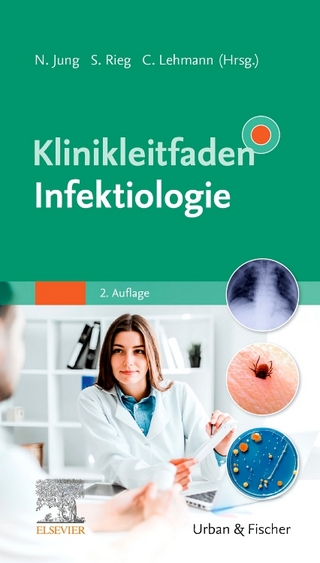
Toxicology- From Cells to Man
Springer Berlin (Verlag)
978-3-642-64696-6 (ISBN)
The Gerhard Zbinden Memorial Lecture.- Alteration of Cell Signalling in Chemical Toxicity.- Human Immunotoxicity and the Environment.- Halogenated Organic Compounds and the Human Immune System: Preliminary Report on a Study in Hobby Fishermen.- Risk Assessment for the Harmful Effects of UVB Radiation on the Immunological Resistance to Infectious Diseases.- Sentinel Screening for Human Immunotoxicity.- Impact of Environmental Pollution on Respiratory Sensitization and Asthma.- Functional Teratogenicity.- to Functional Teratology.- The Neurobehavioural Toxicology and Teratology of Lead.- Teratogenic Effects of Alcohol: Current Status of Animal Research and in vitro Models.- Developmental Neurotoxicology in the Neonate - Effects of Pesticides and Polychlorinated Organic Substances.- Drug Treatment in the Perinatal Period and the Risk of Functional Teratogenicity.- The Effects on Mammals of Pre- and Postnatal Environmental Exposure to PCBs: The Dutch Collaborative PCB/Dioxin Study.- Intercellular Communication.- Connexin Genes and Cell Growth Control.- Disruption of Polarized Function in Hepatocytes.- Cytokines in Human Lung Fibrosis.- The Glio-Vascular Toxicity of m-Dinitrobenzene and Related Agents: Modulation of Toxicity by Neuronal Activation.- Mechanistic Studies of the Inhibition of Intercellular Communication by Organochlorine Compounds.- Renal Toxicology.- Biotransformation and Renal Processing of Nephrotoxic Agents.- Methods for Studying Renal Toxicity.- Site Specific Drug and Xenobiotic Induced Renal Toxicity.- Metal Antidotes - New Developments.- Mobilizers of Stored Cadmium.- Chemical, Pharmacological, Toxicological and Therapeutic Advances of Deferiprone (LI) and Other Iron and Aluminium Chelators.- Free Radicals.- Free Radicals in Toxicology: Redox Cycling andNAD(P)H:Quinone Oxidoreductase.- Cytotoxic Impact of DNA Single vs Double Strand Breaks in Oxidatively Injured Cells.- Mineral Fiber-Induced Oxidative Stress in Phagocytes.- Toward Risk Assessment of Heterocyclic Amines in Food.- Chemical Methods for Assessing Systemic Exposure to Dietary Heterocyclic Amines in Man.- Immunological Methods for Dosimetry of Heterocyclic Amines.- Formation and Processing of Reactive Metabolites of the Heterocyclic Amines.- Enzymic and Interindividual Differences in the Human Metabolism of Heterocyclic Amines.- Extrapolation of Heterocyclic Amine Carcinogenesis Data from Rodents and Nonhuman Primates to Humans.- Clinical Toxicology of Peptides and Proteins.- Antibodies Proposed as Therapeutic Agents.- Unanticipated Human Toxicology of Recombinant Proteins.- The Mechanism of Action of Tetanus and Botulinum Neurotoxins.- Individual Susceptibility to Occupational Toxicants.- Specific Factors Leading to Interindividual Variability in Response to Occupational Toxicants.- Genetic Predisposition in Occupational Toxicology.- Individual Susceptibility to Occupational Toxicants: Practical Consequences for Risk Management.- Ecotoxicology in Central Europe.- Persistent Organic Pollutants - the State of Contamination of Ambient Air in Central Europe. Possible Sources and Effects.- Interdisciplinary "Case Studies" and Training Experts for Primary Prevention of Environmentally-Born Health Hazard.- Plants and Animals as Biomonitors of Heavy Metal Level in the Aquatic Ecosystem of the River Danube.- Ataxonomic Assessment of Phytoplankton Integrity by Means of Flow Cytometry.- The Young Scientist Poster Award.- Identification of the Highly Polymorphic S-Mephenytoin Hydroxylase in Humans.
| Erscheint lt. Verlag | 22.9.2011 |
|---|---|
| Reihe/Serie | Archives of Toxicology |
| Zusatzinfo | IX, 441 p. |
| Verlagsort | Berlin |
| Sprache | englisch |
| Maße | 155 x 235 mm |
| Gewicht | 685 g |
| Themenwelt | Medizin / Pharmazie ► Medizinische Fachgebiete ► Pharmakologie / Pharmakotherapie |
| Medizin / Pharmazie ► Pharmazie | |
| Studium ► Querschnittsbereiche ► Infektiologie / Immunologie | |
| Naturwissenschaften ► Biologie ► Biochemie | |
| Schlagworte | Asthma • Cytokine • developmental neurotoxicology • DNA • ecotoxicology • Environment • infectious disease • Metabolism • Neurotoxicology • Pesticide • Protein • proteins • resistance • Toxicity • Toxicology |
| ISBN-10 | 3-642-64696-4 / 3642646964 |
| ISBN-13 | 978-3-642-64696-6 / 9783642646966 |
| Zustand | Neuware |
| Haben Sie eine Frage zum Produkt? |
aus dem Bereich


